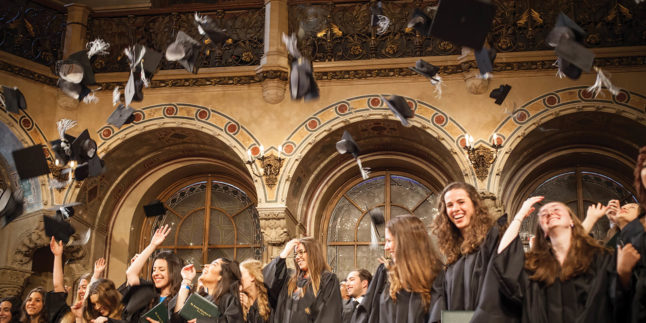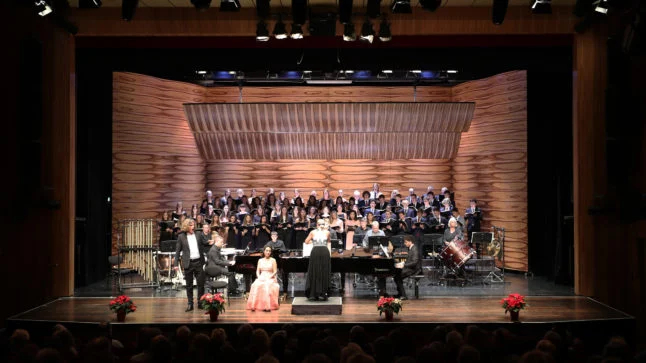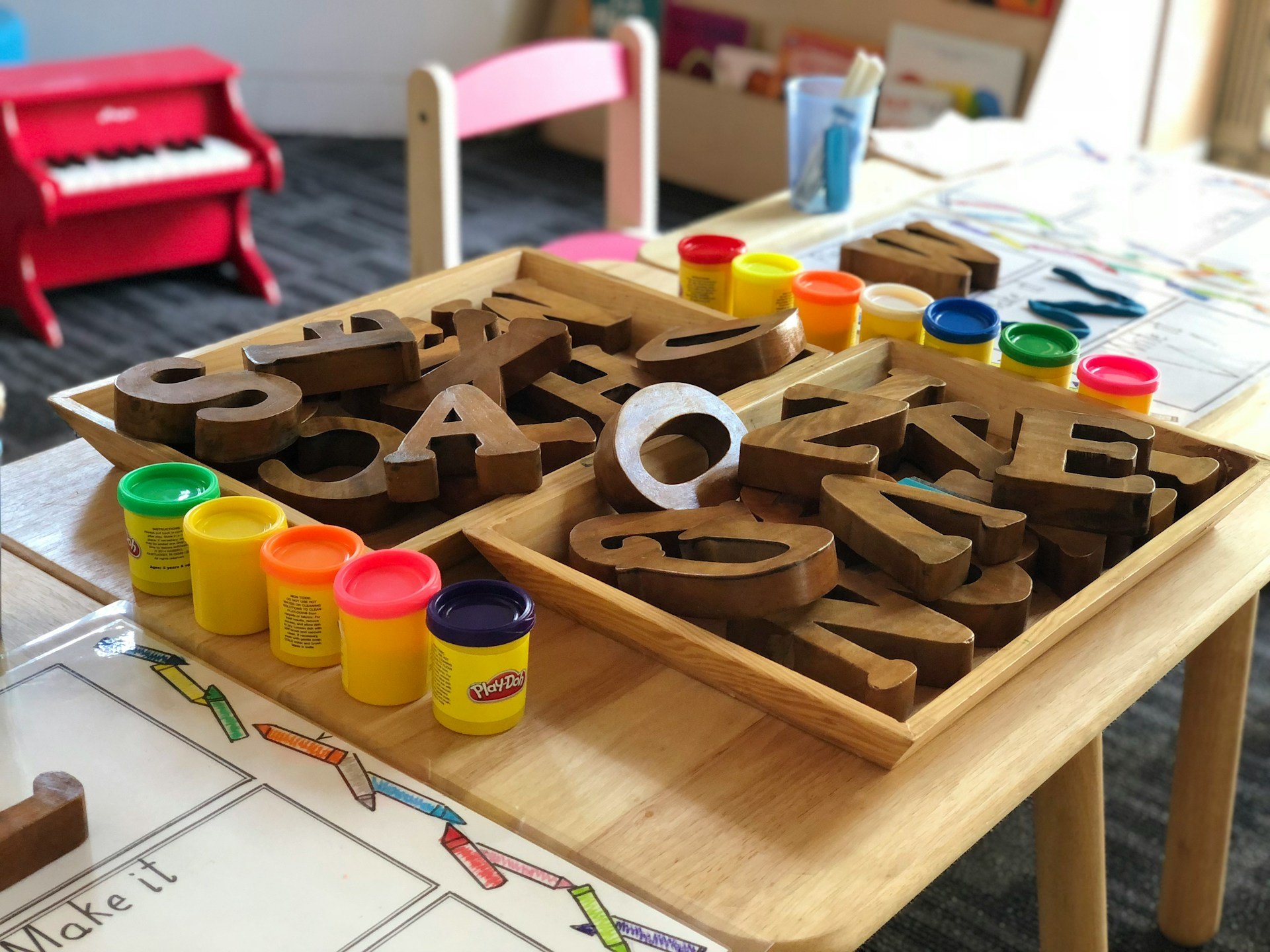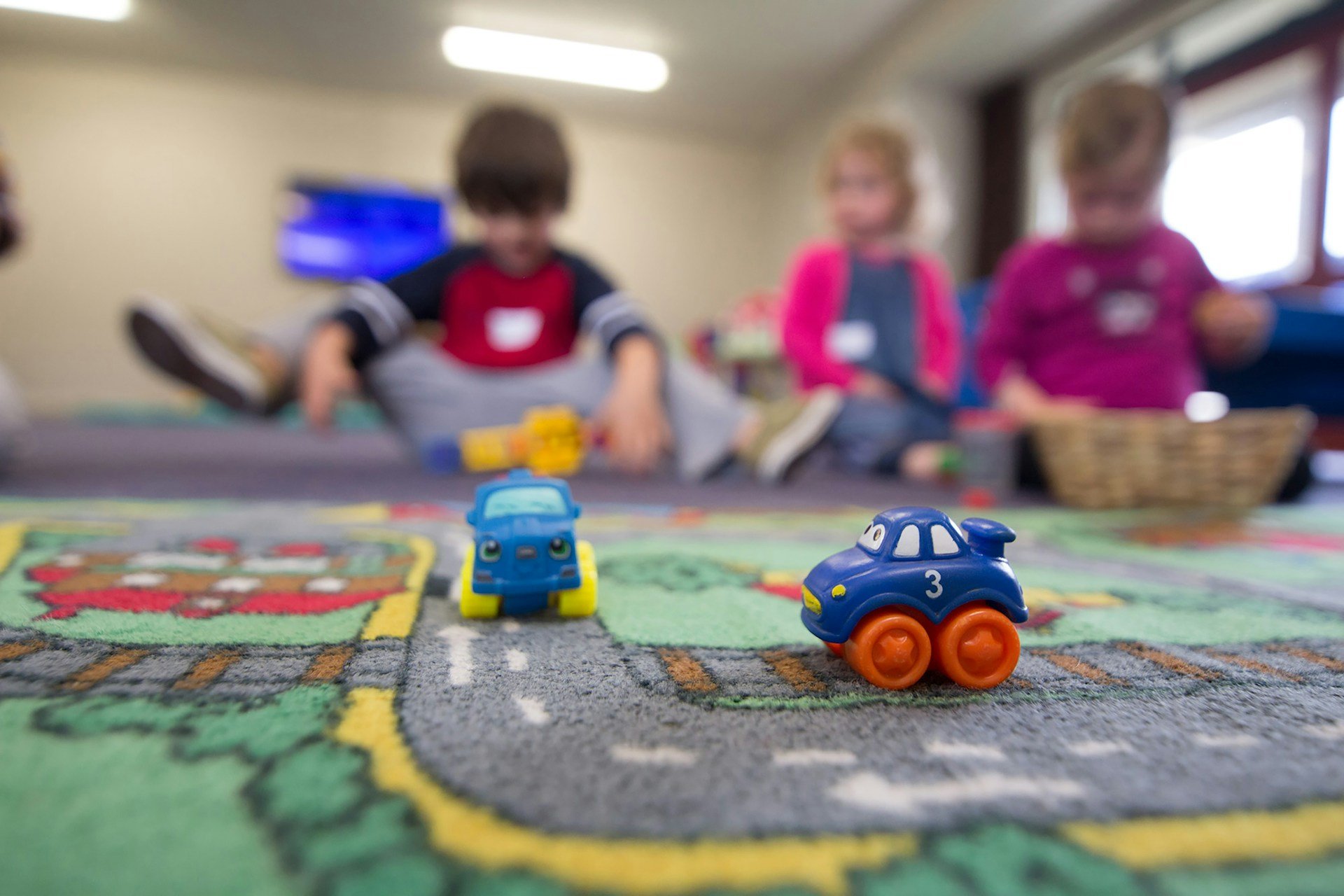We follow the American International School in Vienna (AISV) to discover how the city’s oldest international school encourages students to respect, aspire and achieve as global citizens – but of course, that’s all in a days work!
In 2022, the school blends innovative teaching, a keen understanding of technology, and the local community to nurture positively impactful global citizens in an ever-changing world.
Read on as we learn how students are encouraged to make connections to the world around them by using their personal experiences and culture, and how parents are seen as partners at this prestigious international school.
Morning: Teaching, Tech & Parent Teacher Forum
07:00 – It’s early, but already AISV is a buzzing hive of activity. Outside the school, crossing guards and the school’s security staff take their places.
In adaptive classrooms, teachers set up equipment and technology such as SMART boards and applications that are used to match the pace of each individual student. Much of this is enabled by each student having access to a personal laptop or an iPad.
08:00 – Students begin to arrive on campus. Many arrive via the school’s bus services that cover most of metropolitan Vienna. Others prefer to walk or ride their bikes.
Vienna is recognised as the city with the highest quality of life in the world – scoring 95.1 on the Global Liveability Index – and it is safe for children to travel to school by themselves. Students and staff arriving on an E-bike charge them for free on campus.
08:30 – Around the Elementary School, students begin class. Much of the learning taking place is multidisciplinary. Teachers come together to create units of work that ask questions about the world and encourage students to draw connections across subjects.
Benjamin Sexton, Grade 3 teacher tells us: “My students are encouraged to make connections to personal experiences, their culture, and each other to gain an understanding of how the world around them works.”
Technology plays an important role in connecting AISV students to the wider world – learn how
10:00 – At the monthly Parent-Teacher Forum (PTF) breakfast, parents discuss a range of topics, from the school’s calendar of community events to how the school can help new families acclimate. Fundraising is an important element.
Kathryn Miner, the school’s director, is a frequent attendee of these PTF events and thinks they are an essential part of the school’s continued growth.
“At AIS Vienna, parents are our partners. We hold regular Parent-Teacher Conferences and Coffee Meetings to provide parents with the time and space to allow for important feedback.”
11:00 – In each of the school’s three divisions – Elementary, Middle, and High school – English is the primary language of instruction, however the learning of other modern languages is also taking place.
In the Elementary School, German is the main additional language taught. It allows students to get a firm grasp of the local language, and opens up a wide range of opportunities.
In the Middle and High School, students have a choice of German, French or Spanish, all of which can be taken at the IB Diploma Programme level. AISV students have plenty of opportunities to practise their language skills; the 2022-2023 student body represents a total of 69 citizenships speaking 47 languages.
11:30 – In the Elementary School Science and Innovation Lab, students are using diagnostic tools and laptops to measure natural phenomena. The Lab engages students’ natural curiosity and asks them to consider the complex web of interactions that make up the world around them. This gives them the confidence to become changemakers.
As Brian Golden, ES Science and Innovation Lab Coach & Coordinator states: “The space is imaginative and adaptive, and AIS Vienna’s young global citizens use the tools they learn here to design innovative solutions for the problems facing the world today with courage, curiosity, and joy.”
Midday: Cafeteria, Clubs & Student Council
11:00–13:00 – It’s lunchtime and the school’s 800 students sit together around the campus, eating and socialising. In the cafeteria, the kitchen staff serve hungry students healthy fresh food from local producers who engage in sustainable agriculture. The menu is dictated by what’s in season, and includes Austrian regional favourites.
Elsewhere on the campus, students are attending Student Council meetings – empowering students to shape the future of their school – or club meetings. There are many clubs across the Middle and High School, from newspaper to acting to robotics. These shape the school’s vibrant and diverse culture, and encourage students to pursue their passions.
Grade 12 student Alexandra Kennedy is enthusiastic about the clubs: “Overall, clubs are some of the most meaningful experiences that I have during school. Some, like the National Honor Society, are valuable to me as I feel like I am making a positive difference and contribution to our AIS Vienna community.
“Other clubs, like the Knitting Club (also known as Madame Defarge’s Tricoterie), and my personal favourite, our student newspaper, Knights Chronicle, are valuable because they provide me with outlets I truly enjoy and they give me the ability to learn new skills.”
Afternoon: Synthesis, Study & Sport
13:55 – Across the Middle School, students are working on literacy. Some sit in the library, reading, while in classrooms, discussions are taking place about a range of topics. Students use technology to articulate their opinions and synthesise texts in new ways.
Elsewhere, for the Middle School’s ‘Future Forward’ program, parents and community members sit with students as they work on projects that ask them to engage their critical thinking skills and solve problems facing a changing world.
14:00 – With the end of their schooling approaching, International Baccalaureate Diploma Programme students are deep into exam preparation, either in class or using a study period. Most students graduating High School choose to take the IB Diploma Programme, and are supported with a dedicated teaching team.
15:15 – As the school day officially ends, many students head outside to train as part of the school’s Athletics program or After School Activities program.
Students in the Middle and High School take part in athletic competitions across the country and Europe in a range of sports including soccer, cross country, volleyball, basketball, swimming, boys’ baseball, girls’ softball and athletics. The school has recently invested in livestreaming equipment, meaning that family members can tune in and cheer on the Knights!
Students in the Elementary School also take part in after school activities, with over 35 different classes offered, from swimming to cooking. The program offers students the opportunity to participate in guided activities that complement and enhance the curriculum that guides their daily education.
Andrew Harrison, Director of the Events Office, elaborates: “Educational athletics and activities play a significant role in the life of the students at AIS Vienna. AISV as a school has invested heavily in the program to instil our values of respect, aspire and achieve in all our students.
“Our students compete against other international schools across Europe, in a wide range of sporting or academic activities.
“We believe that the impact we have on students here at AISV means that once they are a Knight, they remain a Knight for life.”
18:00 – Parents and family members are taking their seats in the school’s auditorium to watch one of the many performing arts productions put on by students throughout the year.
In other parts of the school, maintenance staff are readying the school for the next day, when learning will begin anew. However, that’s tomorrow, and as security staff lock up for the evening, everyone has deserved a well-earned rest.
Learn more about how AISV inspires students to respect, aspire and achieve, every single day
All photos were supplied by American International School Vienna.








 Please whitelist us to continue reading.
Please whitelist us to continue reading.
Member comments